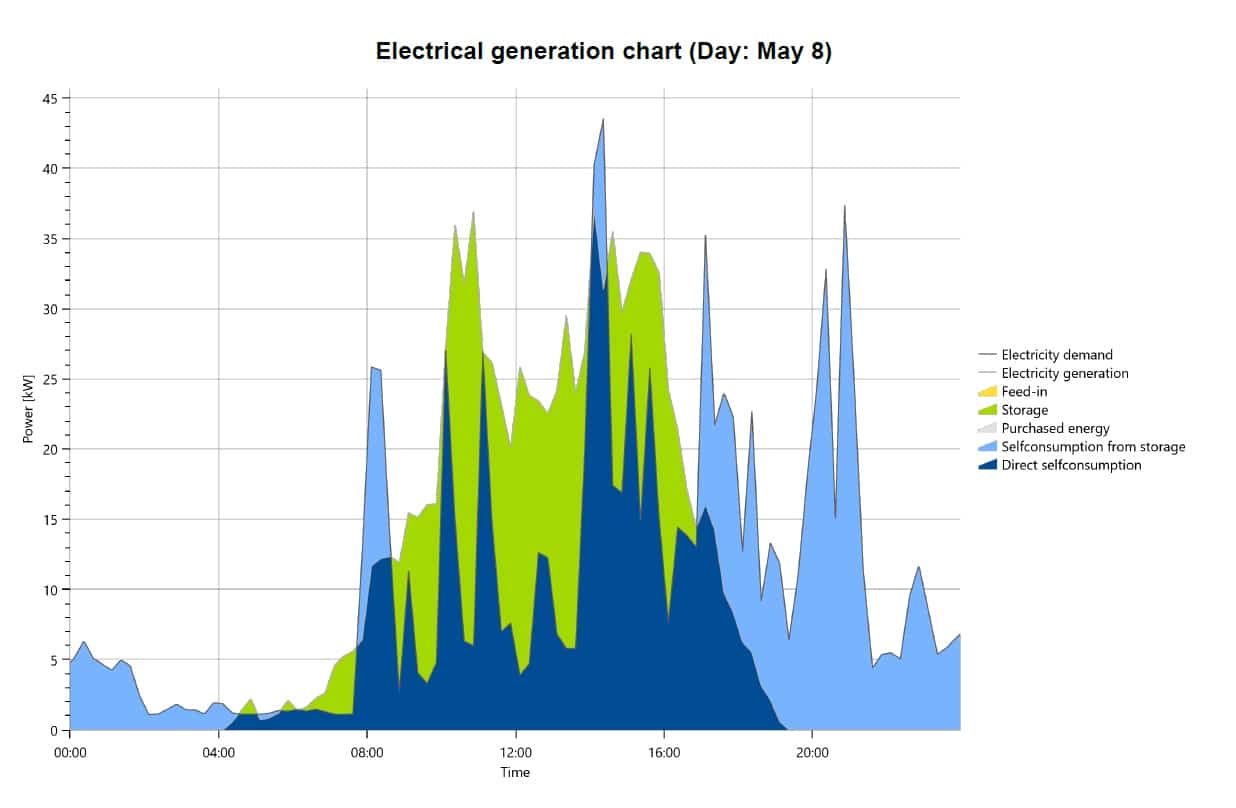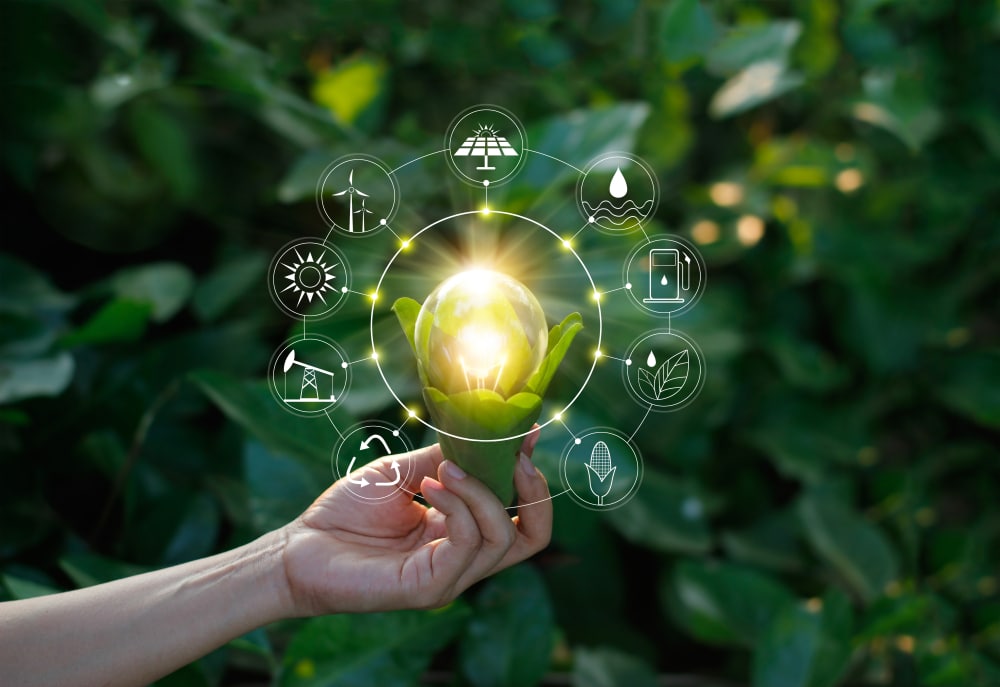As the world shifts towards renewable energy, solar power has emerged as a key player in the race for sustainability. But, what about the financial aspect of investing in solar panels? In this comprehensive guide, we’ll explore the potential solar panel ROI and uncover the true value of investing in solar energy. Let’s dive in!
1. Understanding Solar ROI and Its Importance
Solar ROI, or solar return on investment, is a measure of the financial benefits generated by investing in solar panels. It’s crucial to calculate your solar ROI to understand the payback period and long-term savings you can expect from your investment.
Here are the key factors that impact solar ROI:
- Installation costs
- Incentives and rebates
- Electricity savings
- System performance and degradation
Key Factors Impacting Solar ROI
To better understand the solar return on investment (ROI), it’s essential to delve deeper into the factors that significantly influence it. Here’s a detailed breakdown of these key factors:
Installation Costs
The initial costs of installing a solar panel system include:
- Solar panels: The cost of the panels themselves, which can vary based on their efficiency, quality, and type (monocrystalline, polycrystalline, or thin-film).
- Mounting equipment: The hardware required to secure the panels to your roof or other mounting surfaces.
- Inverters: Devices that convert the direct current (DC) produced by solar panels into alternating current (AC) usable by your home’s electrical system.
- Wiring and other electrical components: The necessary cables, connectors, and switches to connect the solar panels to your electrical system.
- Labor and installation: The costs associated with hiring a professional solar installation company to design, permit, and install the system.
These costs can vary depending on the size and complexity of your solar panel system, your location, and the specific equipment you choose. Higher installation costs can lower your solar ROI, making it essential to find a balance between quality and affordability.
Incentives and Rebates
Financial incentives and rebates can significantly reduce the net cost of installing a solar panel system, thus improving your solar ROI. These incentives can come in various forms, such as:
- Federal tax credits: The U.S. government offers a tax credit for solar energy systems, which can offset a percentage of your installation costs.
- State and local incentives: Depending on your location, you may qualify for state or local incentives that further reduce the cost of your solar system.
- Solar renewable energy certificates (SRECs): In some states, you can earn SRECs by generating solar power, which you can then sell to utilities or other entities that need to meet renewable energy requirements.
It’s crucial to research and take advantage of these incentives to maximize your solar ROI.
Electricity Savings
The amount of money you save on your electricity bills by generating your own solar power is a critical component of your solar ROI. These savings depend on:
- Your current electricity consumption and utility rates: The more electricity you use and the higher your utility rates, the more significant your potential savings.
- Solar panel system size and production: The size of your solar panel system and its energy production capacity will determine how much electricity you can generate and save.
- Net metering: In some locations, you can sell excess solar energy back to the grid through a net metering program, which can further increase your savings.
By calculating your potential electricity savings, you can better estimate your solar ROI and payback period.
System Performance and Degradation
The performance and degradation of your solar panel system over time also impact your solar ROI. Factors that influence system performance include:
- Solar panel efficiency: Higher-efficiency panels can generate more electricity per square foot, increasing your overall energy production.
- System design and installation: Properly designed and installed systems can optimize energy production by minimizing shading and maximizing sun exposure.
- Maintenance and upkeep: Regular maintenance, such as cleaning and inspections, can help ensure your system continues to operate at peak performance.
Solar panel degradation refers to the gradual decline in energy production due to aging and wear. Most solar panels have an expected degradation rate of about 0.5% to 1% per year. By choosing high-quality panels with lower degradation rates and maintaining your system, you can maximize your solar ROI over the lifespan of your panels.
2. Solar Panel ROI: Crunching the Numbers
Calculating the solar panel ROI involves a few simple steps:
- Determine the total upfront cost of your solar panel system, including equipment, installation, and permits.
- Subtract any available incentives and rebates to get the net cost.
- Calculate your annual electricity savings based on your current consumption and utility rates.
- Divide the net cost by the annual savings to find the payback period.
- Estimate the system’s lifetime savings by multiplying annual savings by the expected lifespan of the panels (usually 25-30 years).
Remember, a higher ROI means a better return on investment and shorter payback period.
3. Boosting Your Solar Panel ROI: Tips and Tricks
Here are a few strategies to maximize your solar panel ROI:
- Opt for high-quality, efficient panels to ensure optimal performance.
- Choose the right-sized system for your energy needs to avoid overspending.
- Take advantage of federal, state, and local incentives.
- Opt for a hybrid solar inverter to store excess energy for use during peak hours.
- Regularly maintain and monitor your system to ensure peak performance and prolong the lifespan of your panels.
4. Solar Farms: Uncovering Their Potential ROI
Solar farm ROI is another important consideration for investors looking to diversify their renewable energy portfolios. Solar farms generate large-scale solar power, which is then sold to utility companies or end-users.
Factors influencing solar farm ROI include:
- Land costs
- Equipment and installation expenses
- Maintenance and operational expenses
- Power purchase agreements (PPAs)
While solar farm ROI can vary, some estimates suggest returns between 6-12% are achievable, making them an attractive option for investors.
5. Solar Power ROI: The Bigger Picture
Beyond the financial benefits, investing in solar panels also contributes to a greener planet. By harnessing clean, renewable energy, you’re reducing your carbon footprint and supporting a more sustainable future. Additionally, solar power can help reduce dependence on fossil fuels, promote energy independence, and create jobs in the clean energy sector.
6. The Future of Solar ROI: Emerging Technologies and Trends
The solar industry is continuously evolving, with new technologies and trends emerging that promise to improve solar ROI even further. Some of these developments include:
- Advancements in solar panel efficiency: With ongoing research and development, solar panels are becoming more efficient and capable of generating more energy from the same amount of sunlight.
- Solar trackers: These devices allow solar panels to follow the sun’s path, ensuring maximum energy production throughout the day.
- Floating solar farms: By installing solar panels on bodies of water, floating solar farms can save land resources while benefiting from the cooling effect of water, resulting in higher efficiency.
- Solar panel recycling: As solar panels reach the end of their lifespans, recycling initiatives are being developed to minimize waste and recover valuable materials for reuse.
As these technologies become more widespread, solar panel ROI will likely continue to improve, making solar energy an even more attractive investment option.
7. Key Takeaways: Investing in Solar Power for Maximum ROI
In summary, investing in solar power can yield substantial financial rewards, as well as contribute to a greener and more sustainable future. To maximize your solar panel ROI, keep the following points in mind:
- Understand the factors that impact solar ROI, including installation costs, incentives, electricity savings, and system performance.
- Calculate your solar panel ROI to estimate your payback period and long-term savings.
- Implement strategies to boost your solar ROI, such as choosing high-quality panels, optimizing system size, and leveraging incentives.
- Consider investing in solar farms as an alternative or complementary option to rooftop solar panels.
- Stay informed about emerging technologies and trends in the solar industry that can further improve solar ROI.
By taking these steps, you can make the most of your solar investment and enjoy the financial and environmental benefits of clean, renewable energy. For more information on solar power and related technologies, explore our in-depth articles on energy storage systems, battery technology advancements, and off-grid solar solutions.
8. Expanding Your Solar Knowledge: Energy Storage, Advanced Batteries, and Off-Grid Solutions
By diving deeper into the world of solar power and related technologies, you can further optimize your solar investment and enjoy even greater financial and environmental benefits. Here are some topics worth exploring:
Energy Storage Systems
Energy storage systems, such as solar batteries, allow you to store excess solar energy for later use. This can help you:
- Increase your energy independence by relying less on grid electricity, especially during peak demand hours or power outages.
- Maximize your solar panel system’s value by storing energy during times of peak production and using it when your panels aren’t generating power, such as at night or during cloudy days.
- Participate in utility demand response programs, which may provide financial incentives for reducing your grid electricity usage during peak demand times.
9. Monitoring and Optimizing Solar ROI Over Time
Once your solar panel system is up and running, it’s important to keep an eye on its performance and make adjustments as needed to ensure you’re continually maximizing your solar ROI. Here are some tips for monitoring and optimizing your solar ROI over time:Regular Performance Monitoring
Monitor your solar panel system’s energy production and consumption using monitoring software or applications provided by your solar installer or inverter manufacturer. This will help you:- Identify any issues or underperformance that may require maintenance or repairs.
- Understand your energy usage patterns and make adjustments to improve energy efficiency and further reduce your reliance on grid electricity.
- Track your solar panel system’s performance over time, allowing you to see the effects of system degradation and plan for potential upgrades or replacements.
Periodic Maintenance and Repairs
Regular maintenance, such as cleaning your solar panels and inspecting the system for damage or wear, can help ensure your system continues to operate at peak performance. In addition, promptly addressing any issues or malfunctions can minimize downtime and prevent further damage, ultimately protecting your solar ROI. Work with a reputable solar service provider to schedule routine maintenance and handle any necessary repairs.Energy Efficiency Improvements
By making energy efficiency improvements to your home or property, you can reduce your overall energy consumption, allowing your solar panel system to cover a larger percentage of your energy needs. Some energy efficiency improvements to consider include:- Sealing air leaks and adding insulation to improve your home’s thermal envelope.
- Upgrading to energy-efficient appliances, lighting, and HVAC systems.
- Installing a smart thermostat to optimize your heating and cooling usage.
- Implementing energy-saving habits, such as turning off lights and electronics when not in use.
System Upgrades and Expansions
As your energy needs evolve over time, you may need to upgrade or expand your solar panel system to maintain or improve your solar ROI. Some potential upgrades and expansions include:- Adding more solar panels to increase your system’s energy production capacity.
- Upgrading to a more efficient inverter or adding a hybrid solar inverter to improve system performance and enable energy storage integration.
- Installing an energy storage system, such as a solar battery, to maximize your solar panel system’s value and increase your energy independence.
10. Evaluating Solar ROI in Different Market Conditions
As the solar market evolves and the cost of solar equipment changes, it’s essential to keep an eye on how these shifts can impact your solar ROI. In addition, variations in electricity prices, government incentives, and financing options can also influence the attractiveness of solar investments. Here are some factors to consider when evaluating solar ROI in different market conditions:Fluctuations in Solar Equipment Costs
The cost of solar panels, inverters, and other equipment has generally decreased over the past decade, making solar power more affordable for homeowners and businesses. However, market factors, such as supply chain disruptions or changes in demand, can cause temporary fluctuations in equipment prices. By staying informed about solar equipment costs and trends, you can time your investment to take advantage of favorable market conditions and maximize your solar ROI.Changes in Electricity Prices
Electricity prices can vary significantly depending on your location, utility provider, and the prevailing energy market. Higher electricity prices typically make solar power more attractive, as the potential savings on your energy bills are more significant. Keep an eye on electricity price trends in your area and consider locking in a favorable rate with a solar power purchase agreement (PPA) or other financing arrangement if available.Shifts in Government Incentives
Government incentives, such as tax credits, rebates, and net metering programs, can have a significant impact on your solar ROI. However, these incentives can change over time as governments update their energy policies or budgets. Stay informed about current and upcoming incentives in your area, and be prepared to act quickly if an attractive incentive program is introduced or scheduled to expire.Availability of Financing Options
The availability and terms of solar financing options, such as loans, leases, and PPAs, can also influence your solar ROI. Explore different financing options and compare their terms, interest rates, and potential impacts on your solar ROI. In some cases, you may be able to take advantage of low-interest rates or promotional offers that make solar investments more attractive.Evolving Solar Technology
As solar technology continues to advance, new products and solutions may offer improved performance, reliability, or affordability that can enhance your solar ROI. Stay informed about the latest developments in solar technology, such as higher-efficiency panels, more durable mounting equipment, or innovative energy storage solutions. By incorporating these advancements into your solar panel system, you can potentially increase your energy production, extend your system’s lifespan, or reduce your maintenance costs, all of which can contribute to a higher solar ROI.11. Considering Insolation, Geographical Location, and Panel Angle for Optimal Solar ROI
The amount of solar energy your panels can generate and your resulting solar ROI are significantly influenced by factors like insolation (the amount of sunlight received), geographical location, and the angle at which your panels are installed. To optimize your solar investment, it’s essential to take these factors into account.
Insolation and Geographical Location
Insolation refers to the amount of solar radiation received at a specific location. It varies depending on factors such as latitude, climate, and time of year. Typically, regions closer to the equator with sunnier climates experience higher insolation levels, which can lead to higher solar energy generation and improved solar ROI.
When considering solar investments in different countries or regions, keep in mind that insolation levels will play a crucial role in determining the potential energy production and ROI of a solar panel system. For instance, solar installations in sunnier regions like Spain, Australia, or the southwestern United States may yield higher returns compared to those in cloudier, higher-latitude areas like the United Kingdom or Germany. However, even in less sunny regions, solar power can still be a viable investment, especially when combined with government incentives or innovative technologies like bifacial solar panels, which can capture sunlight from both sides.
Panel Angle and Orientation
The angle and orientation of your solar panels significantly affect their energy production and, consequently, your solar ROI. To maximize energy generation, solar panels should be installed at an angle that optimizes their exposure to direct sunlight throughout the year. The optimal angle for solar panels depends on your location’s latitude and the specific tilt angle that will ensure the panels receive the most sunlight throughout the day and year.
In the Northern Hemisphere, solar panels should typically face south, while in the Southern Hemisphere, they should face north. The optimal tilt angle can be roughly calculated as your latitude minus 10-15 degrees for summer, plus 10-15 degrees for winter, or equal to your latitude for year-round optimal performance. However, it’s essential to consult with a solar professional to determine the best angle and orientation for your specific location and situation, as factors like shading, roof design, and local weather patterns may also play a role.
By considering insolation, geographical location, and panel angle when planning and installing your solar panel system, you can optimize your system’s energy production and maximize your solar ROI. Keep in mind that investing in solar power is not a one-size-fits-all solution, and understanding the unique factors that influence solar performance in different regions and situations is crucial to making the most of your solar investment.

12. Solar Panel ROI Case Studies and Examples
To illustrate the potential benefits of solar panel investments, let’s take a look at several case studies and examples of homeowners and businesses that have successfully implemented solar power systems and achieved impressive ROIs.
Residential Solar Installation in California
Location: California, United States
System Size: 7 kW
Installation Cost: $21,000 (after incentives)
Annual Electricity Savings: $2,100
ROI: 10% annually, payback period of 10 years
In this example, a homeowner in California installed a 7 kW solar panel system on their roof. After taking advantage of federal tax credits and local rebates, the total installation cost was $21,000. The solar system generates enough electricity to cover 100% of the homeowner’s energy needs, resulting in annual electricity savings of $2,100. With a 10% annual ROI, the solar system will pay for itself in 10 years, and the homeowner will continue to enjoy significant energy savings for the system’s 25+ year lifespan.
Commercial Solar Installation for a Small Business
Location: Queensland, Australia
System Size: 30 kW
Installation Cost: $45,000 (after incentives)
Annual Electricity Savings: $9,000
ROI: 20% annually, payback period of 5 years
In this case, a small business in Queensland, Australia, installed a 30 kW solar panel system on the roof of their commercial building. The total cost of installation, after taking advantage of government incentives, was $45,000. The solar system generates enough electricity to cover 100% of the business’s energy needs, resulting in annual electricity savings of $9,000. With an impressive 20% annual ROI, the solar system will pay for itself in just 5 years, and the business will continue to benefit from substantial energy savings for the system’s 25+ year lifespan.
Community Solar Farm in Germany
Location: Bavaria, Germany
System Size: 500 kW
Installation Cost: €750,000 (after incentives)
Annual Electricity Savings: €112,500
ROI: 15% annually, payback period of 6.7 years
In this example, a community solar farm was built in Bavaria, Germany, with a total system size of 500 kW. After taking advantage of government incentives, the installation cost was €750,000. The solar farm generates enough electricity to power 125 households, with each household saving an average of €900 per year on electricity costs. The total annual electricity savings for the community is €112,500, resulting in a 15% annual ROI. The solar farm will pay for itself in 6.7 years, and the community will continue to benefit from clean, renewable energy and significant cost savings for the system’s 25+ year lifespan.
These case studies demonstrate that solar panel investments can yield impressive ROIs for homeowners, businesses, and communities across different geographical locations and system sizes. By carefully considering factors such as installation costs, incentives, and energy savings, individuals and organizations can make informed decisions about solar power and maximize the financial benefits of their investments.
Manufacturing Company in Spain
Location: Andalusia, Spain
Industry: Textile manufacturing
System Size: 200 kW
Installation Cost: €300,000 (after incentives)
Annual Electricity Savings: €50,000
ROI: 16.7% annually, payback period of 6 years
Auto-consumption Rate: 80%
In this case study, a textile manufacturing company in Andalusia, Spain, installed a 200 kW solar panel system on the roof of their factory. The company took advantage of government incentives, reducing the total installation cost to €300,000. The solar system generates enough electricity to cover 80% of the company’s energy needs through auto-consumption, resulting in annual electricity savings of €50,000. With a 16.7% annual ROI, the solar system will pay for itself in just 6 years, and the company will continue to benefit from significant energy savings for the system’s 25+ year lifespan.
Food Processing Company in India
Location: Gujarat, India
Industry: Food processing
System Size: 1 MW
Installation Cost: ₹6 crore (after incentives)
Annual Electricity Savings: ₹1 crore
ROI: 16.7% annually, payback period of 6 years
Auto-consumption Rate: 90%
In this example, a food processing company in Gujarat, India, installed a 1 MW solar panel system on the ground adjacent to their factory. After taking advantage of government incentives, the installation cost was reduced to ₹6 crore. The solar system generates enough electricity to cover 90% of the company’s energy needs through auto-consumption, resulting in annual electricity savings of ₹1 crore. With an annual ROI of 16.7%, the solar system will pay for itself in 6 years, and the company will continue to enjoy substantial energy savings for the system’s 25+ year lifespan.
Automotive Component Manufacturer in South Africa
Location: Gauteng, South Africa
Industry: Automotive component manufacturing
System Size: 500 kW
Installation Cost: R7.5 million (after incentives)
Annual Electricity Savings: R1.5 million
ROI: 20% annually, payback period of 5 years
Auto-consumption Rate: 85%
In this case study, an automotive component manufacturer in Gauteng, South Africa, installed a 500 kW solar panel system on their factory roof. The company benefited from government incentives, which reduced the total installation cost to R7.5 million. The solar system generates enough electricity to cover 85% of the company’s energy needs through auto-consumption, resulting in annual electricity savings of R1.5 million. With a 20% annual ROI, the solar system will pay for itself in just 5 years, and the company will continue to benefit from significant energy savings for the system’s 25+ year lifespan.
Solar ROI in the Context of Energy Price Increase
The energy market has experienced dramatic changes, with Germany facing a significant increase in energy prices to €600/MWh in 2022. This sudden spike in energy costs has a direct impact on the return on investment (ROI) for solar panel systems. Let’s analyze how this energy price increase affects solar ROI for a hypothetical residential solar installation in Germany.
Location: Germany
System Size: 7 kW
Installation Cost: €15,000 (after incentives)
Previous Annual Electricity Cost: €2,000 (based on €300/MWh)
New Annual Electricity Cost: €4,000 (based on €600/MWh)
Annual Electricity Savings: €4,000
ROI: 26.7% annually, payback period of 3.75 years
Before the energy price increase, a homeowner in Germany installed a 7 kW solar panel system at a cost of €15,000 (after taking advantage of government incentives). The solar system was designed to cover 100% of the homeowner’s energy needs. At the previous energy price of €300/MWh, the homeowner would have saved €2,000 per year on electricity costs.
In conclusion, solar panel ROI is an essential metric to consider when investing in solar energy. By understanding the factors that impact ROI and employing strategies to maximize it, you can enjoy substantial financial rewards and contribute to a more sustainable future. To learn more about solar energy and related technologies, explore our comprehensive guides on energy storage and battery technologies.



